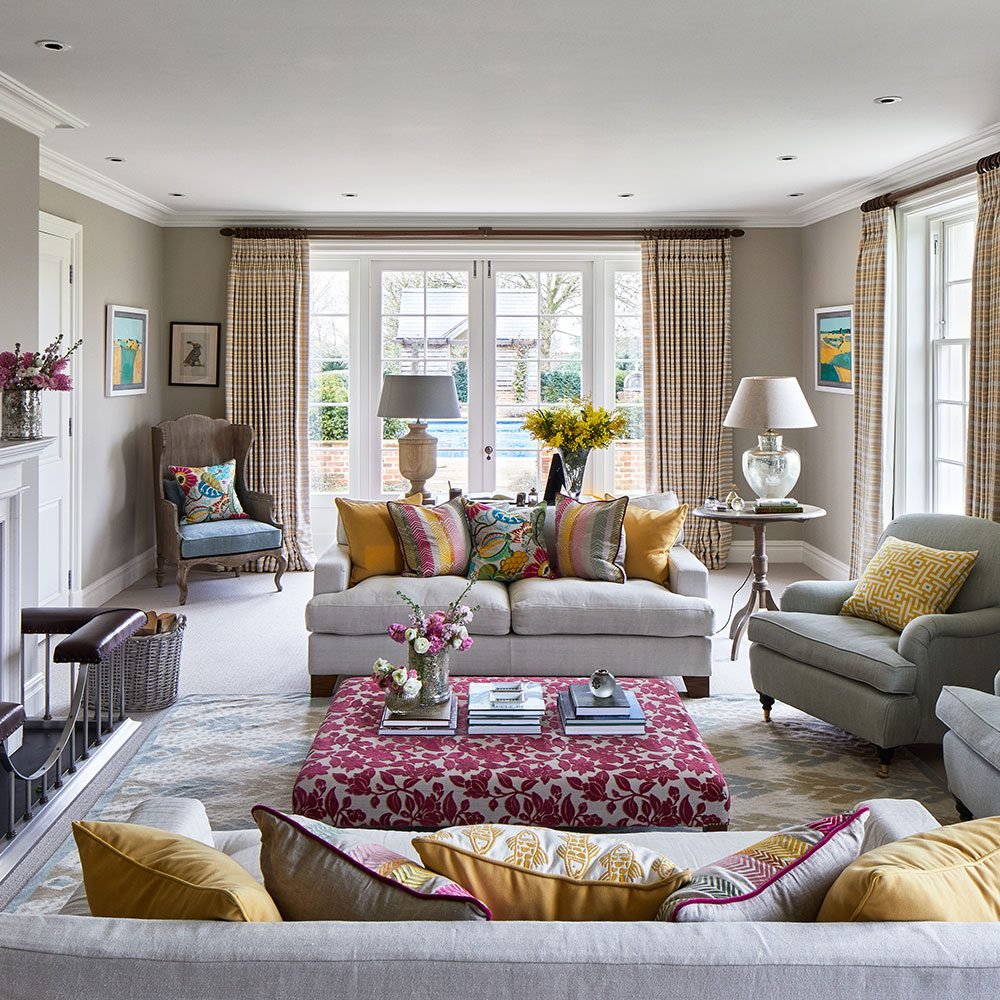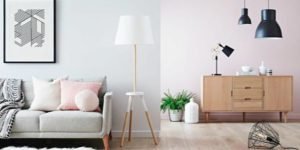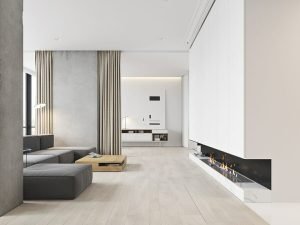How interior design affects health
Design is thought.
Everything we see has been designed, even things we cannot see, when we plan our day, we design that. Design is merely planning, preparation, problem solving, decision making and research.
To be a good designer, you should not think it is okay to cut corners, standards must be high. We believe that every detail is essential in creating a good overall product or space.
We are empathetic and want to make a difference and an impact with what we create, even just a little.
We think bigger picture, and nothing is individual.
Personally, I have always been affected by what I am surrounded by, and my moods can change very easily. I think subconsciously I knew I wanted to be a designer from a very young age as I was constantly looking around me, criticizing everything I could see, how it worked, whether it solved its purpose or made life more difficult.
As humans, we are always experiencing feelings, good and bad thoughts are flowing by the minute. I truly believe what we are surrounded by really effects our health and they way we behave in the space.
More and more research is being done to prove what I think we already know that our overall health is interconnected and our body and mind are more connected that we think. Optimum health is now about overall good health and our mental health is really something that has often been neglected in the past, but we are starting to realise that it needs to be addressed with mental health issues at an all-time high.
There is a variety of factors that affect can affect our mental health, but why not do what we can to improve it in any way. I believe our interiors and experiences caused by our surroundings can be beneficial to our everyday feelings and emotions if they are in a positive state.
We all know that colour affects us, but I don’t just want to explore this. I want to look at everything we see and do where design is involved.
Let’s look at this deeper.
It’s time to take a more Holistic approach. So, in terms of interior design, how can we help.
We can design spaces that alleviates stress, anxiety and an overall negative state of health. When it comes to the workplace, this is something that has been in the spotlight in recent times. Let’s design spaces that encourage meetings of a different kind, such as in window seats, or armchairs, pods and booths and even sofas etc. Behaviours change due to our surroundings. When it comes to glazed offices let’s face our desks towards the glass, encouraging our colleagues to come in as they will feel you are more approachable.
The space, layout, lighting, acoustics, furnishings, architectural details and even air quality all affect the overall feel of a space, even the smell of the space can affect how someone feels in it. This is especially important for commercial spaces such as offices when it comes to performance and engagement.
June is employee wellbeing month so it is time to really think about how important it is for people to be surrounded by positivity in order to get the most out of them, not only this but from a moral stance, it is good to do your bit in a bid to counteract stress and anxiety brought on from challenging and demanding jobs. As the saying goes “your health is your wealth” but our health is not just determined by our diet and fitness, it is hugely affected by our environment and the instant impact it can have. Don’t underestimate it!
When it comes to our homes, can all admit that our living space can really influence our emotional state of mind for both good and bad. To do this, sufficient flow of natural light in any residential or commercial space to stimulate good mood is a non-negotiable, a lack of light can cause a negative state of mind and lack of productivity.
Therefore, a circadian lighting system mimicking natural lighting is essential. I like to have a variety of different styles of lighting as choice provides options for lighting to be adapted based on time of day, the task or how you feel. Personally, I cannot relax if the main living room light is on, so in evenings softer lighting is ideal for me to be able to chill out! Likewise, in a commercial setting such as an office, the right lighting is important when it comes to settings suitable for working on computers.
Colour choice is something that should not be taken lightly. We are highly visually stimulated by what we are surrounded by and colour can trigger brain cells to bring certain feelings to the forefront. It is scientifically proven that colour affects mood. The more we see certain colours, the more it affects any chemical imbalances within our brains. Colour personalities cause most effect when they are the dominant colour, so the impact is less where it is used just on a feature wall.
Colours get broken down into primary colours, cool and warm colours. Depending on the style of interior and the feeling you want to evoke; will dictate whether you choose warm or cool tones. Contemporary spaces usually suit cool colours and more traditional usually suit warm colours.
Warm colours are colours with warm undertones such as red yellows, red-oranges, reds, yellows and yellow-greens. Warm colours will make small spaces feel smaller, therefore cosy, but larger spaces feel more compact and intimate.
Cool colours are colours with undertones such as purples, blues, and blue-greens and they create a calming effect, paired with white make a space feel larger as the colours recede. These colours are best for spaces that receive plenty or light.
With primary colours, less is more and should be used to create a pop! They work well with warm colours to create an essence of ambience.
Let’s look at some of the most impactful colours and see what they can do!
Yellows are ideal if you need a pick me up, then yellow is the colour for you, its cheerful, happy and has an energising effect when you choose a brighter tone. Softer tones are more calming. Yellow tones are great for spaces that lack natural light, especially if used to paint a ceiling! So, get risky and try it out!
Blue is calmness, serenity and relaxation, so ideal for a bedroom, also suitable for a home office as they are supposed to help focus you and encourage productivity. Blues are best for rooms with plenty of natural light, but warm tones can work in this case. Blues creating a feeling of freshness and a sense of cleanliness.
Reds are good for bedrooms and living rooms, as they evoke a passionate atmosphere, due to their energy and edginess. Its best to choose muted tones to keep it elegant and classy! At all cost avoid it in a kitchen as it can it encourages appetite.
Purples are about sophistication and glamour; they have a regal value to them and suggest creativity and luxury.
Oranges are about energy and motivation, hence why we see them in gyms where people need to be to be stimulated. Avoid these in bedrooms and living rooms at all costs!
Ergonomics are essential in making life more straight forward therefore easing anxiety, stress and even addressing some physical discomfort. This is something we must look at when designing spaces such as offices and kitchens or anywhere that is highly task related. The aim of better design in offices for example is to ensure a reduction in absenteeism and encourage retention of staff and productivity.
The importance of the right chair, what can I say. it is essential to reduce back pain, encourage good posture, which in turn will help keep aches and pains to a minimum. Looking at height adjustable workspaces gives the option to employees are a great addition as part of your workplace health and wellbeing strategy. One brand I am impressed by is Fellowes and their recently launched the Lotus RTTM sit stand converter. It is designed to be flexible with the help of the TriMotionTM arm allowing it to be moved to suit the task at hand. Allowing flexibility also helps employees to feel a sense of freedom making them feel more comfortable, in turn encouraging them to be more productive. Fellowes have thought of everything, even a cable management system making it easy to relocate allowing flexibility for layout should the team expand. The ergonomics don’t stop there, the waterfall effect is also a great feature. Another benefit is that it promotes coworking, creating a buzz around the office. They have a number of other great products which you can check out further below.
https://www.fellowes.com/gb/en/default.aspx

If you’re not convinced, check out some more information on the benefits of sit/stand desks and the studies behind them, please see the following articles.
- The business and health benefits of a standing desk:
https://www.fellowes.com/gb/en/resources/health-and-wellbeing/benefits-of-a-standing-desk.aspx
- The sit-stand movement, one of our research papers and the ambassador programme:
https://www.fellowes.com/gb/en/resources/health-and-wellbeing/the-sit-stand- movement.aspx
Health at home
After a day at the office, stepping in your front door to a happy interior is the best way to end your day, allowing you to leave any stress behind. If your surroundings are appealing, your home, is clean, tidy and organised, you are guaranteed to feel more positive naturally, however decorating with your favourite colours or the most recent trend led shade, does not necessarily create a well-designed interior. There are many more elements to creating such a space. The most important being the vision for the look. It must be planned; you decide on a style that inspires you and plan to create your version of this. A good layout based on how you use your space is most important, this is individual and should be thought about in depth.

Zoning is essential in design for a variety of reasons, from an aesthetic point of view and also to encourage and influence how people interact within a space. For example, arranging furniture in a way that will create an opportunity for people to interact with each other, like sitting opposite someone at the dinner table, this means no tables against the wall. The Georgian period has this down to a T, their layouts in living spaces ensured that people would interact regularly.
As I have only touched the surface on this topic and there is just so much more to learn, I have added a link below to the well certified website where you can see the standards created by architects and designers, in order to create some industry standards. As stated in the well certified website “The WELL Building Standard is unique in its practice, focusing on individuals’ needs. Interior Architects commented that the certification “addresses elements humans need to survive and flourish, including clean air, clean water, healthy food, natural light, regular activity, physical and mental comfort, and nourishment.”
On that note, I will leave you with my summary tips on what you can quickly do improve your surroundings.
- Go all Maria condo on your house and get organised. This can be a cheap task but highly effective.
- Spring clean, perfect time to do it after you have organised.
- Use pure essential oils to fragrance your home, with a simple diffuser you can create a variety of different scents to make you home smell amazing and best of all they are good for a variety of health issues, especially mental health!
- Review your lighting system!
- Make sure every space has a purpose!
For those of you who need help with all this. I can tailor my services to suit you needs, so contact me via my form here on my website or email me directly danielle@macantainteriors.com I am ready to help you make positive changes today!




